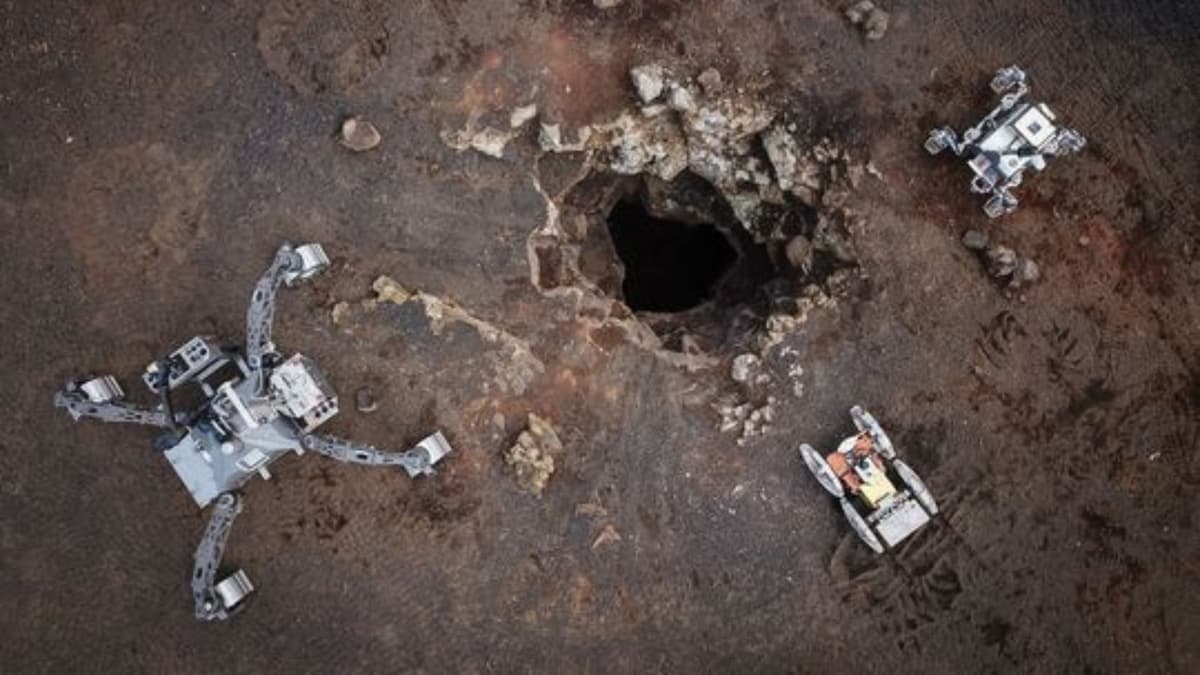What if the first permanent human homes on Mars or the moon aren’t on the surface at all, but hidden deep beneath the ground in ancient lava tubes?
That’s exactly the frontier a team of scientists is preparing for—by sending autonomous robots into volcanic caves here on Earth. The testing ground: Lanzarote, a volcanic island in Spain’s Canary Islands. Its subterranean passages bear an uncanny resemblance to the underground caverns already confirmed on the moon and suspected on Mars.
These lava tubes could be game-changing. Unlike exposed surface bases, underground shelters shield future explorers from deadly radiation, wild temperature swings, and micrometeorite impacts. They might even harbor traces of microbial life—a biological jackpot waiting to be discovered.
But there’s a catch: sending humans into these caves is too risky, too expensive, and too complex. That’s why the future of space colonization may hinge on machines that can boldly go where no astronaut can.
Robots in the Dark
The Lanzarote field trial unfolded like a sci-fi mission dress rehearsal. Over 21 days, two robotic explorers—SherpaTT and Coyote III—teamed up to tackle the forbidding cave. They mapped terrain, deployed sensor cubes, rappelled down walls, and pushed 235 meters into the darkness while generating a 3D map in real time.
Think about that: a robotic duo performing synchronized maneuvers in total darkness, without direct human control. This is the kind of autonomy Mars will demand. On a planet where round-trip communication with Earth can take up to 40 minutes, hesitation is not an option. Robots will need to act like pioneers, not puppets.
The Road Ahead
The trial wasn’t flawless—sensors faltered, radar misread moisture, and mapping precision suffered. But perfection isn’t the point. The point is that robots proved they could operate in alien-like caves and survive long enough to gather the kind of intelligence humanity will need before staking its claim in extraterrestrial real estate.
The big leap now lies in refining autonomy. For robots to truly lead humanity underground on other worlds, they’ll need smarter algorithms, robust self-coordination, and faultless communication between units. Failures won’t mean delays; they’ll mean death for future colonists relying on these machines to scout safe havens.
Why It Matters
If the first Martian settlers live in a cave, it won’t be because NASA decided to imitate cavemen—it will be because autonomous robots opened the door. These machines could be the scouts that find breathable atmospheres, shielded habitats, and maybe even the first alien microbes we’ll ever encounter.
The story of human expansion into the solar system won’t just be written in rockets and landers—it will be written in the silent tracks of robots crawling through volcanic darkness.
Similar stories you may want to explore:
- NASA’s Robot Swarms Could One Day Explore the Hidden Caves of Mars
- ESA’s Robotic Missions Aim to Unlock the Secrets of Lunar Lava Tubes


